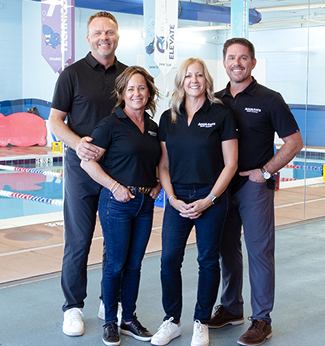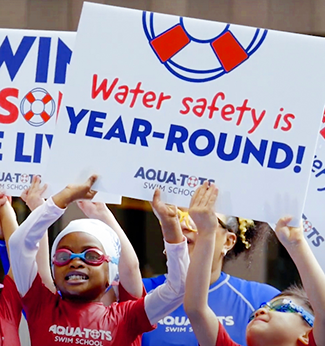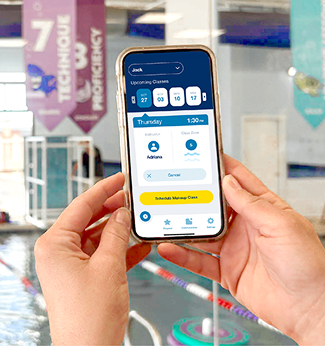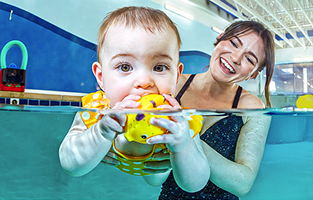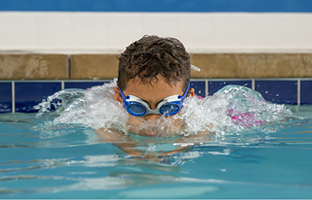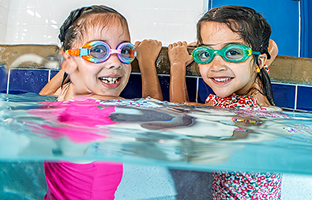Why Swimming Is the Best Fall Sport for Kids

From one busy parent to another, we know fall can feel like a whirlwind. Back-to-school season means busy schedules, new routines, and lots of moving parts. There’s school supply shopping, sports practices, music lessons, scout meetings…and then swim lessons?
We know you have lots of choices when it comes to fall activities for kids. If you’re having trouble figuring out which one should come first, keep reading to learn 6 reasons why swimming should take priority.
1. Swimming Is a Lifesaving Skill
Swimming is the only sport that has the ability to save your life. It’s more than splashing around; it’s a series of skills that work together to help people find air and propel themselves forward. These two main actions are essential to prevent drowning, and it’s crucial that all children know how to swim. However, learning to swim takes time and consistent practice. Preparation for next summer’s water adventures starts now!
2. Swimming Provides an Educational Boost
Studies show swimming supports early cognitive development—especially in math and reading. According to a study conducted by Griffith University, 3- to 5-year-olds who swim are six months ahead of the normal population in math skills, two months ahead in literacy skills, 11 months ahead in verbal skills, and 20 months ahead in understanding directions. The counting and listening skills children learn in the pool carry directly into the classroom.
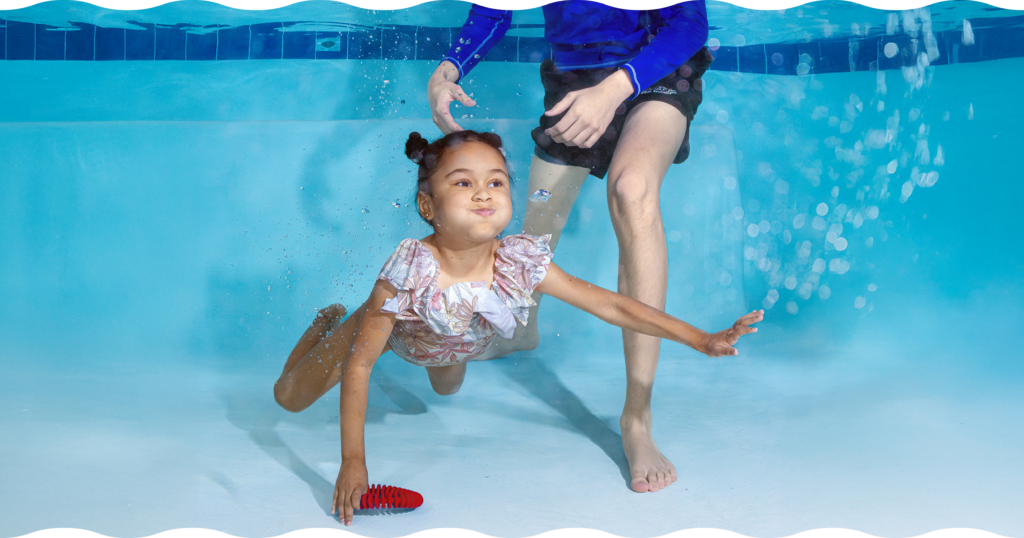
3. Swim Lessons Promote Physical Fitness
Swimming builds endurance, balance, strength, flexibility and full-body coordination. It’s a low-impact sport that strengthens growing bodies without the risk of contact injuries. Swimming burns 500-700 calories per hour, and according to Swimming World Magazine, it’s an all-body exercise that uses more muscles than baseball and football!
4. Swimming Helps with Character Development
Swim lessons offer more than physical skills; they build character and teach life lessons that extend well beyond the pool. Through each stroke and kick, your child develops essential traits that will support them in all areas of life.
- Patience: Progress takes time. With consistent practice, your child will come to understand the value of steady effort and the rewards that come from the process, like mastering new skills.
- Discipline: Attending lessons week after week teaches children the importance of commitment. They learn that improvement comes from showing up regularly, focusing during practice, and working hard to reach their goals.
- Resilience: Setbacks are a natural part of learning. Whether it’s a moment of frustration or skill regression due to a break in lessons, our instructors are there to support and guide your child. They’ll help them bounce back with confidence, realize they can do hard things, and are capable of overcoming challenges.
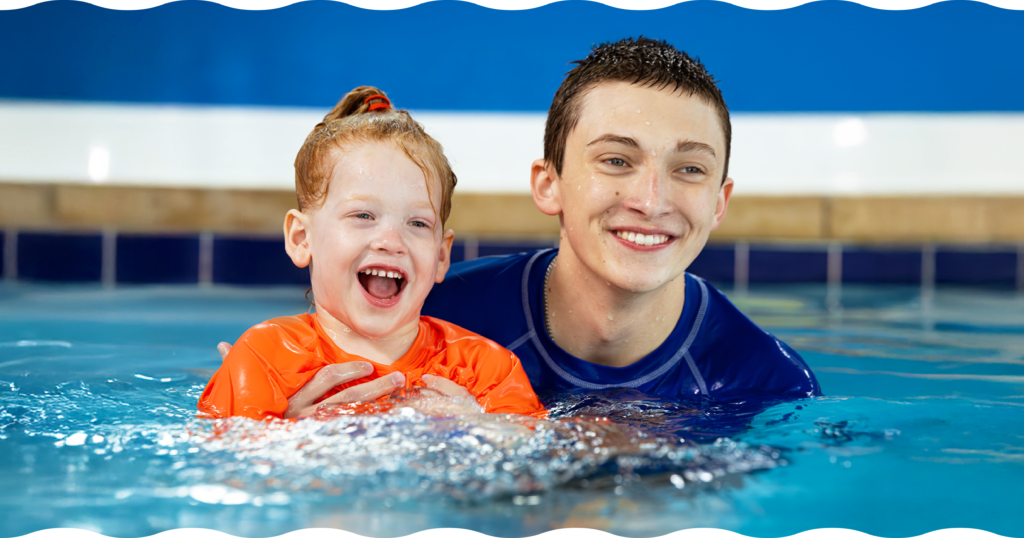
5. Swim Lessons Offer Team AND Solo Sport Benefits
The Aqua-Tots Swim Journey goes beyond lessons—it’s a dynamic, goal-oriented experience where children grow together and individually. Like soccer or football, our curriculum builds skills week after week, with levels, milestones, and plenty of team spirit. In small group classes, kids cheer each other on and celebrate shared successes, learning the power of encouragement and teamwork.
But swimming also offers something unique: the opportunity for personal growth. Each child progresses at their own pace–whether it’s mastering a back float, retrieving a ring from the pool floor or perfecting their strokes. Much like competitive swimming—where athletes race both the clock and their peers—our lessons foster both individual achievement and team energy. Through it all, children gain confidence, focus, and resilience, becoming their best selves both in and out of the water.
6. Mental Health Benefits of Swimming for Kids
Swimming is a fantastic way for kids to manage stress and improve mood—being in the water naturally relaxes the body, and the physical activity helps release feel-good chemicals in the brain like endorphins (Front Psychiatry). Studies show that while mental illness is on the rise (Agency for Healthcare Research and Quality), swimming can help reduce symptoms of anxiety and depression in children, keeping them healthy, happy, and on track.
It All Works Together
The significance of swimming extends well beyond summer. It’s a year-round sport that helps your child stay active, build confidence, and continue learning in ways that carry over into everyday life, including the classroom. As routines settle in and the school year gets underway, fall is actually one of the best times to see real progress in the pool. Kids thrive with consistency, and swimming provides a structured, encouraging environment where they can grow physically, emotionally, and socially. It’s a smart, healthy choice that supports your child’s development from every angle, and it can help your child grow into their best, healthiest, and most confident self.
Ready to make swimming part of your fall routine? Use our Location Finder at the top of this page to find a school near you and enroll today!

